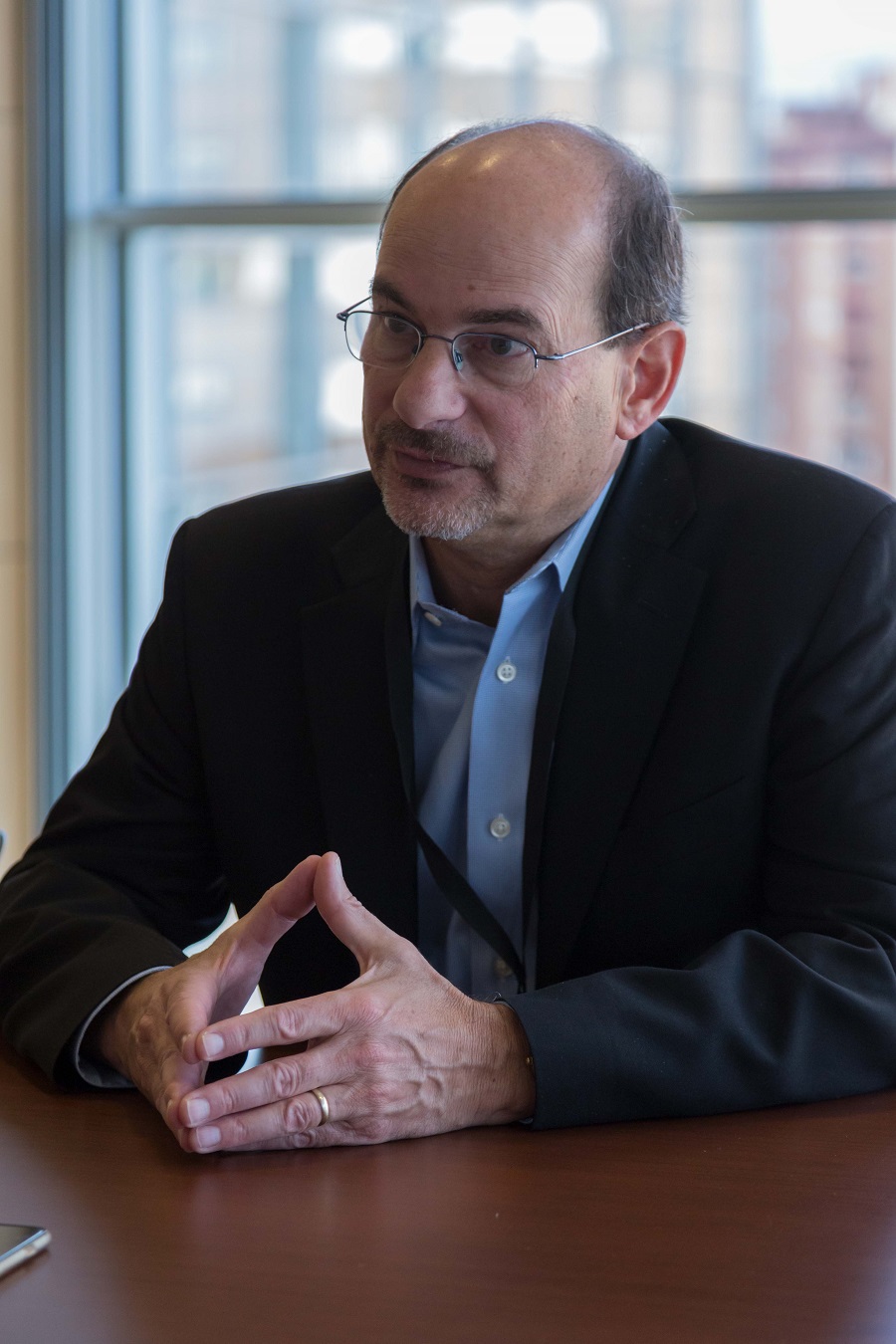Dr. Omer Berenfel: "The tutoring capacity is directly related to the possibility of obtaining real answers to scientific problems"
Dr. Omer Berenfeld participated in the CNIC Conference ‘Atrial fibrillation: from Mechanisms to Population Science’ held at the CNIC in 2017.
Dr. Omer Berenfeld is Professor of Internal Medicine and Biomedical Engineering at the Arrhythmia Research Center of the University of Michigan (USA). His research focuses on the principles and mechanisms of propagation of electrical impulses in the heart using. His research uses a combination of experimental, clinical and numerical approaches in order to better understand acute and chronic atrial fibrillation. Dr. Omer Berenfeld participated in the CNIC Conference ‘Atrial fibrillation: from Mechanisms to Population Science’ held at the CNIC in 2017.
- How would you define the current research situation in atrial fibrillation (AF)??
We find ourselves in an exciting moment now. Although there are still many issues to resolve, we have made great progress in characterizing the events that lead to AF. Thanks to the use of optical and electronic systems, it has managed to characterize what happens during AF in order to improve treatments. In my opinion, I think it is fundamental to understand what happens during AF. Not long ago there were many aspects of AF that were a real mystery for researchers, but now we have made important progress in aspects as relevant as the genetic base of AF or the propagation of electrical impulses in the heart.
- How far away are we from determining and knowing all the events that lead to AF?
In reality, we still don’t know exactly what happens in this disease, which is why it is risky to say how far away we are from having a complete vision of AF. What we have recently found is that the more we research, the more events we discover; that is to say, in my case, when we research pulse propagation, as technology gets more sophisticated and allows for a better resolution, we get more detailed information. Unfortunately, we still don’t know what happens at the beginning, in the early stages of AF. We still don’t have the technology with enough resolution in order to be able to answer this question; at this moment we are defining what type of precision is necessary to identify the key characteristics of AFA.
- What are the areas of research that you are focusing on right now?
We are currently working on the mechanisms of pulse propagation. There are many aspects related to the mechanisms of pulse propagation, but the main ones are the mechanisms of the rotors (rotational activity). The evidence we have obtained is that there are some small anomalies in the heart that are enough to start those rotors and, in this way, trigger AF. My research focuses on the factors that affect the dynamics of the rotors, how they behave and how to stop this process and restore the normal heart rate.
- Does that mean that these “rotors” could be a possible target for new treatments of AF?
Exactly. We must avoid alterations that promote induction in the rotors, whether it be with the use of medication, through techniques such as ablation or through any other method. Additionally, we need special technologies for the study of these rotors, because we are not talking about regular patterns like those that occur in a tachycardia, but rather an activity that generates extremely complex patterns of pulse propagation. We probably need technology with much greater precision.
- What advice would you give to young researchers?
In my opinion, the most important thing one must do when starting a career in research is to focus on something that one really wishes to discover and put all of one’s effort in that. Additionally, one must have a very open mind, ask questions about fundamental problems and be honest with the answers.
- In this sense, how important is the mentor figure for you?
It is a critical facet of development in science. It is part of the scientific speech and discussion, of the research machinery itself to solve problems. In my opinion, it is key. The tutoring capacity is directly related to the possibility of obtaining real answers to scientific problems.
- It’s not your first visit to the CNIC. What do you think about the center??
I was here a few years ago and they showed me what this center and its laboratories would be like. And now I see it and it's impressive. A very serious and rigorous system has been created that includes the facilities, researchers and workers of the center. It is not only the building, but the way in which the CNIC articulates, is financed, works, interacts with other centers, regulatory agencies, researchers, etc. The feeling that it transmits is that someone has given the CNIC a very special priority. It is probably a model of success. Time will tell.
- Dr. Omer Berenfeld participated in the CNIC Conference ‘Atrial fibrillation: from Mechanisms to Population Science’ held at the CNIC in November of 2017 and organized by David Filgueiras, José Jalife and Miguel Manzanares, of the CNIC, and Stephane Hatem, of the Sobornne University, Paris. .











